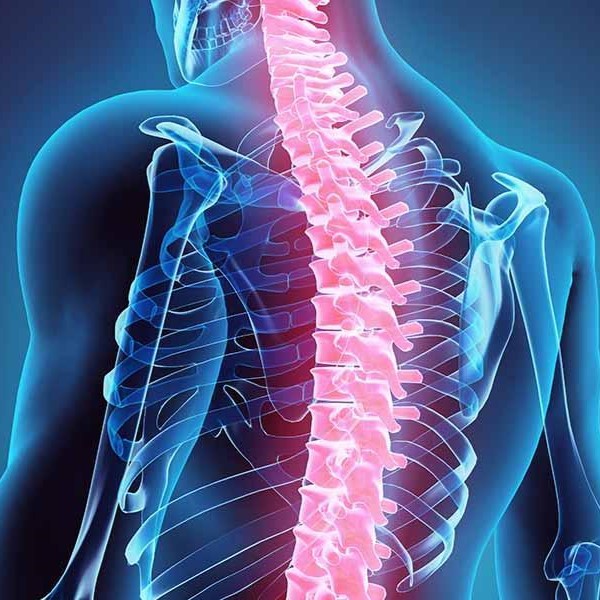Osteoporosis is a health condition that causes bones to become weak and brittle. As people age, their bones naturally become weaker, increasing the risk of fracture. This can lead to fractures in the spinal bones.
What Is Osteoporosis?
Osteoporosis is characterized by a decrease in bone density. Also known as osteopenia, osteoporosis is also described as a deterioration of bone structure. This causes bones to thin, become more fragile, and weaker. One of the most common areas for fractures due to this brittleness in bones is the spine. These fractures are called "osteoporotic spinal fractures". They indicate the collapse of the bone weakened by osteoporosis.
What Causes Osteoporosis-Related Fractures?
Osteoporosis-related spinal fractures can occur because of minor trauma. They can occur depending on the progression of osteoporosis.
Factors such as low bone mineral density, age, sex, genetics, medication use, and health conditions can cause osteoporosis-related fractures.
Osteoporosis-related fractures can occur in any bone, but they are most common in the spine, hips, and wrists. A spinal fracture can cause the spine to collapse, which can lead to back pain and postural problems.
What Are the Symptoms of a Spinal Fracture?
Severe back pain: A spinal fracture usually manifests as severe and sudden back pain, which is concentrated in the fracture.
Movement restriction or difficulty: A person with a spinal fracture may have difficulty moving in the fracture, and their movements may be restricted. They may have trouble with movements such as bending and turning.
Sensitivity and painful spots: The fracture point in the spinal area becomes sensitive, and even a light touch can cause pain.
Change in spinal shape: In severe spinal fractures, the normal shape of the spine can be distorted. In this case, an abnormal curvature and shape change can be observed in the back or neck.
Difficulty breathing: If a spinal fracture occurs in the chest region, the broken spinal piece can press on the lungs, making it difficult to breathe.
Loss of strength and numbness in the arms or legs: A spinal fracture that presses on the spinal cord can cause loss of strength or numbness in the arms or legs. This is a medical emergency.
Numbness or weakness in the abdomen: A spinal fracture in the lumbar region can lead to numbness, weakness, or loss of control in the lower abdomen.
Bladder or bowel problems: Spinal fractures caused by spinal cord injuries can affect bladder and bowel control.
Prevention Measures for Osteoporosis-Related Spinal Fractures
Get enough calcium and vitamin D: Calcium and vitamin D are critical for bone health. Dairy products such as milk, yogurt, and cheese are rich in calcium. In addition, fish, eggs, and vitamin D supplements can also increase vitamin D intake.
Get regular exercise: Regular exercise helps to strengthen bones and reduce the risk of fractures. Weight-bearing exercises can increase bone density.
Don't smoke: Smoking can weaken bones and accelerate osteoporosis. Quitting smoking is a major step for bone health.
Limit alcohol consumption: Excessive alcohol consumption can accelerate osteoporosis. Limiting alcohol intake is a better option for bone health.
Avoid lifting heavy weights: Lifting heavy weights can increase the risk of bone fractures. Weightlifting done with incorrect techniques can damage bones.
If you are at elevated risk of osteoporosis or have been diagnosed with osteoporosis, it is important to see a doctor. Your doctor will assess your risk by conducting evaluations such as bone mineral density (BMD) testing and recommend appropriate treatment options. It is especially important to follow your doctor's recommendations for your own health.

Discover the journey of Osimplant...
Start of production
Our production facilities launched its operations after our R&D activities.
First renowned product osi
Expansion
With the addition of our posterior cervical products, our product range and sales network has expanded.
First European Exhibition
We exhibited at Medica – World Forum For Medicine to engage with European markets.
First specialized industrial meeting
We started exhibiting at EuroSpine where all brightest minds in spine get together.
Innovation
We have launched our biggest innovation project with TUBITAK (Scientific and Technological Research Council of Turkey).
First renowned pediatric system uve
We have engineered our Pediatric Systems JUVE which has been a great success in local and international markets.
Trabecular implant cages terracotta
The trabecular implant cage project is thorough and ready to launch to the markets.
Anvisa certification
We are proud to be the first Turkish manufacturer with Anvisa Certification